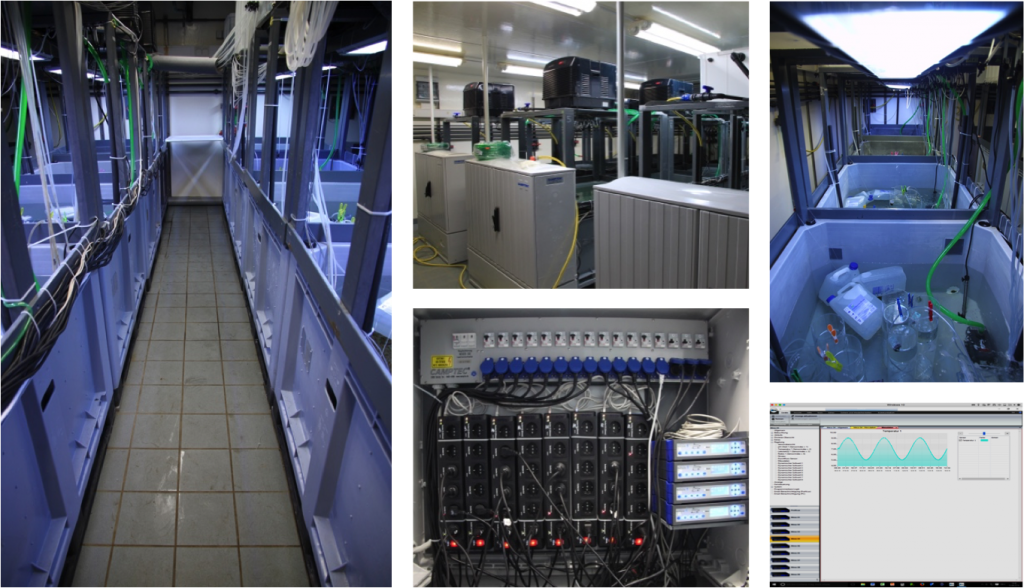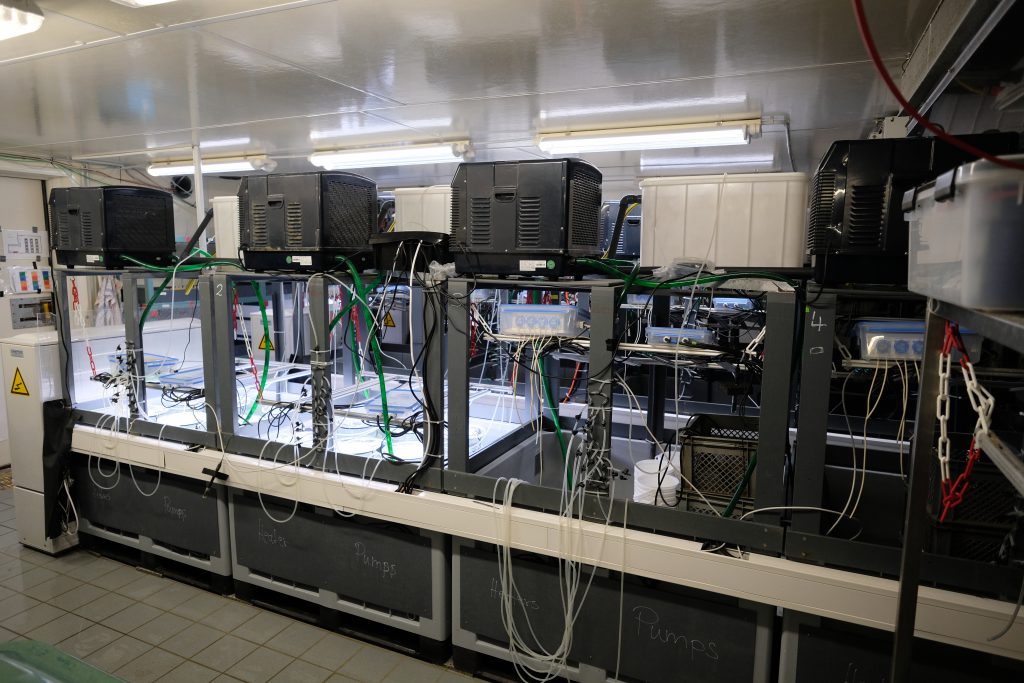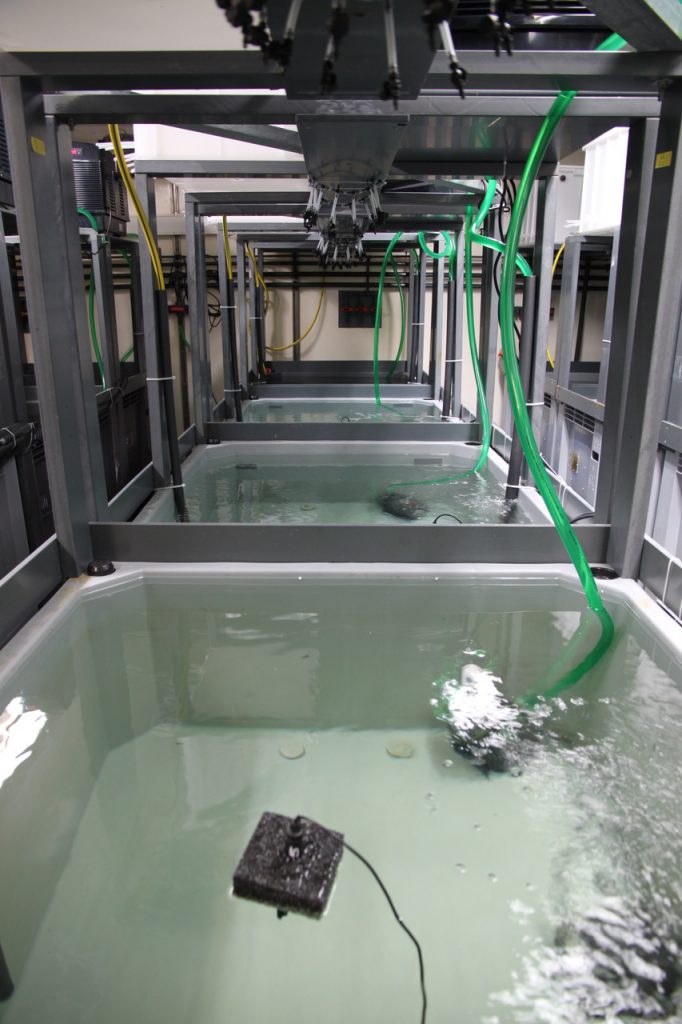Jahangir Vajedsamiei, Laura Hennigs, Michael Raatz and Christian Pansch
In this project, we apply short-term online recordings (assays) of species’ physiological responses to immediate changes in environmental parameters. The responses seen are used to calculate, predict and explain responses to medium-term (weeks to months) incubations of species (and simplified communities) under diverse patterns of environmental (mainly temperature) variability, from diurnal cycles to weekly fluctuation patterns.
Climate change will shift mean environmental conditions, alter climate variability patterns, and increase the frequency and intensity of extreme events, exerting additional stress on ecosystems, particularly so in shallow water habitats. Therefore, environmental fluctuations of natural systems should be considered in models aiming to accurately project the ecological impacts of climate change. Theoretical frameworks (i.e. Jensen’s Inequality for nonlinear functions 1, 2, 3) are applied to incorporate fluctuation impacts into projections based on performance curves established under constant environmental conditions 4. Changes in variability patterns can modify the performance function, due to modulatory effects of homeostatic control, acclimatization, and any other carry-over effects (e.g. physiological stress or damages), also called the “time-dependent effects” 5.
It is crucial to understand whether and how functional responses to fluctuations can modulate the performance of a species or a community. In this context, we investigate the effects of different variability scenarios on performance and energetics traits of bivalves using a fluorometer and oximeter equipped flow through setup (FOFS) for simultaneous measurements on a high temporal scale. By processing these short-term measurements with Python, we determine GAMs and best-fit polynomial functions to describe the measured functional energetics responses. The framework of Jensen’s Inequality (JI) for nonlinear functions is then applied to a Taylor polynomial similar to the best fit polynomial function in order to predict bivalve functioning in fluctuating environments. The predicted outcomes of the short-term physiology assays are then compared to findings retrieved from medium-term (weeks to months) performance assays, conducted in computer-controlled mesocosm facilities, the Kiel Indoor Benthocosms (KIBs 6).
The aim is to examine the role of time-dependent effects and to use theoretical frameworks like JI as null model approaches for the prediction of performance based on functional energetics. Further, we aim to highlight the role of functional responses to short-term environmental variability in driving organismic performances in a changing ocean.

Figure 1. FOFS
Figure 2. KIBs
This work is published in:
Jahangir Vajedsamiei, Martin Wahl, Andrea Schmidt, Maryam Yazdanpanahan, Christian Pansch (accepted) The higher the needs, the lower the tolerance: Extreme events may select ectotherm recruits with lower metabolic demand and heat sensitivity. Frontiers in Marine Science
Jahangir Vajedsamiei, Frank Melzner, Michael Raatz, Rainer Kiko, Maral Khosravi, Christian Pansch(2021) Simultaneous recording of filtration and respiration in marine organisms in response to short-term environmental variability. Limnology and Oceanography – Methods 00:1-13 (http://dx.doi.org/10.1002/lom3.10414)
References:
1 Ruel & Ayres 1999 TREE
2 Chesson et al. 2003 Transition
3 Koussoroplis et al. 2017 Ecol. Monogr.
4 Vasseur et al. 2014 Proc. R. Soc. B Biol. Sci.
5 Kingsolver et al. 2015 J. Exp. Biol.
6 Pansch & Hiebenthal 2019 L&O Methods



